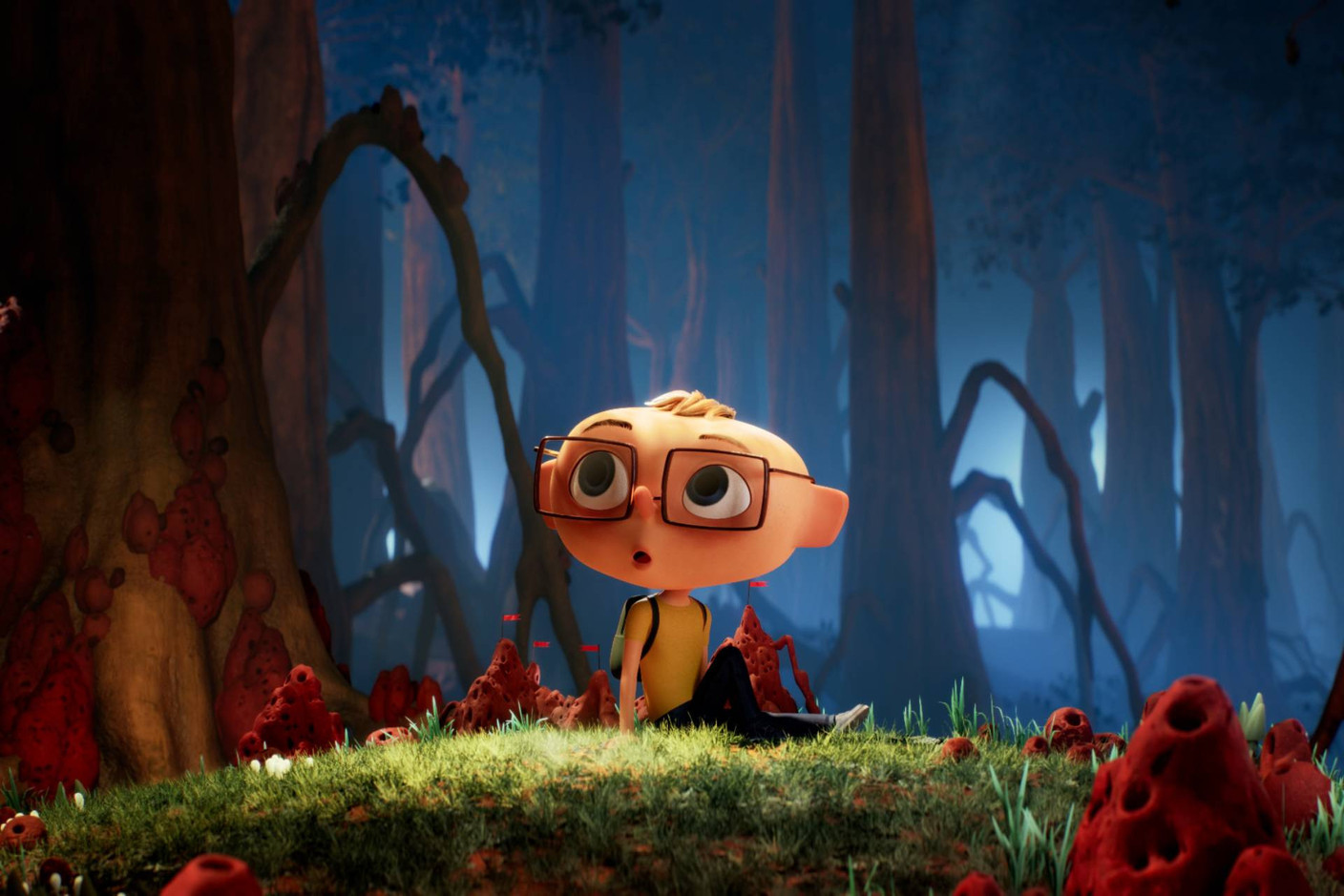Ten-year-old Angelo is a fragile young boy, but full of imagination: as his bowl of milk turns into a turbulent river, he dreams of being an adventurer and explorer. But one day, bad news arrives: his grandmother is ill and the family has to go to her bedside. But on the way, Angelo’s parents mistakenly forget him at a motorway service station. The little boy has to be brave and decides to cut through the forest to get to his grandmother’s house. He enters a mysterious land, inhabited by strange beings and threatened by an enemy even worse than the local ogre.
During his adventure, Angelo enters the territory of Ultra, a great violet narcissistic despot, ready to destroy the forest in order to monopolise the source of immortality. He meets an army of ants, a squirrel who wants to be a green bird and tries it out, the vegetable golem Goouh, an angry cloud and the ogre’s daughter Zaza, a young resistance fighter against the horrible Ultra.
A comic book adaptation
For “Angelo dans la forêt mystérieuse,” Vincent Paronnaud (co-director with Marjane Satrapi of “Persepolis” in 2007) has adapted the comic strip “Dans la forêt sombre et mystérieuse,” which he wrote under the name Winshluss and for which he won a Pépite d’or at the Salon du Livre Jeunesse in Montreuil. For this project, he has been joined by Alexis Ducord (co-director of “Zombillénium”), a Gobelins graduate and 3D expert. Together, they rewrote the comic book, adapting it for children aged 6 to 14.
This fast-paced feature film has a certain freedom of tone, tackles contemporary issues such as consumerism, the destruction of the planet and the presence of AI, and is not afraid to confront the archetypes of fairy tales or death, because “not all stories have happy endings,” says the toad.
The animation is co-produced by Zeilt productions, with France’s Jesuisbiencontent and Gaoshan Pictures. “The project was presented to Laurent Witz in 2018 when it still only existed in comic book form. But he was won over by the ecological message it conveys and quickly agreed to take part in the production,” explains Lisa Grilli, production assistant. With an overall budget of just under €10m, Luxembourg contributed more than 20% of the total budget, and almost 30% of the film was made in the grand duchy. “We were involved at every stage, from development through to design, animation, set design, texture work and so on.” The sound was provided by Philophon and the Luxembourg version by Soundtastic. The music, written by Olivier Bernet, is performed by the Luxembourg Philharmonic Orchestra conducted by Gast Waltzing.
The film was selected for the Annecy International Animated Film Festival and the Cannes Film Festival in the special screening category. It is now available in cinemas in Luxembourg, in French and Luxembourgish versions.
This article was originally published in .








